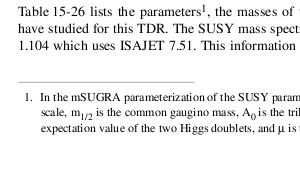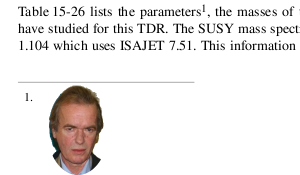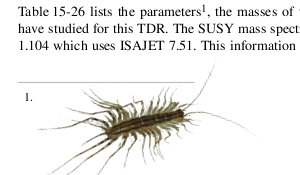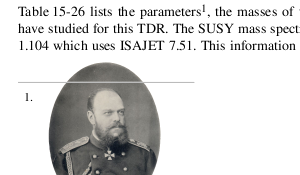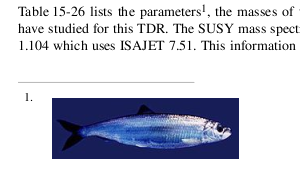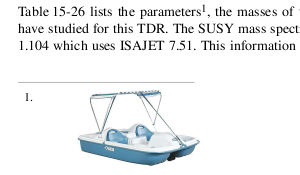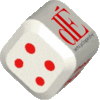Uncyclopedia:Foreign Office/+Nederlands
Here, I will work on translations to Dutch, since using Word didn't really work out.
My Translate List:
- Sherlock Holmes (from English)
- Verkeerd Gecategoriseerd Artikel (Wrongly Categorised Article) (from Norwegian)
- Galileo Galilei (from Italian)
- Voetnoot (Footnote) (from French)
- Eigen doelpunt (Own goal) (from Polish)
- GVB (from English)
Voetnoot[edit]
Een voetnoot[1] is een informatieve[3] tekst, onderaan een pagina gezet[2], waardoor een woord of zin toegelicht kan worden zonder de symbolische[4] waarde van de oorspronkelijke tekst te vergooien.
Voetnoten[edit]
- ↑ Dit heeft niets van doen met een muzieknoot[13]. Het is een gewoon een klein[5] stuk tekst. Dat was toch wel duidelijk, schlemiel?!
- ↑ Heel af en toe verschijnt een voetnoot[1] ook op een andere plek, zoals een houten plank[8], een plak Parmaham[24] of een duizendpoot[15].
- ↑ The Information was een boek van Martin Amis novel uit 1995. Ook is het een album van Beck uit 2006. Huh[22], dat kan je geen moer schelen?[7]
- ↑ Een beroemd woordenboek[10] stelt: "Een symbool is een teken, embleem of vorm ter identificatie van een idee, concept of voorwerp." Maar als je niet weet wat een symbool[4] is, dan ben je echt zielig.
- ↑ Tot op heden is er nog geen richtlijn wat betreft de lengte van een voetnoot[1]. Meestal zijn ze kort en beknopt, maar in Nieuw-Zeeland[19] zijn Bigfoot-notes van meer dan 4 meter lang, die mannen uitmoorden, kinderen verslinden en gewassen en iglo's vernielen[14].
- ↑ Een nummer voor identificatie. Als in "Zo, ik heb net Louis Renault op zijn nummer gezet." Huh[22], daar snap je vast niks van… Nou, jij[23] bent toch hopeloos!
- ↑ Vanaf het moment dat jij[23] besluit dit artikel[26] te lezen, moet je toch eens je dagtaken nalopen… Je[23] gaat me niet vertellen dat je hier, in een tekst over voetnoten[1], iets interssants en leerzaams dacht te kunnen vinden!
- ↑ Eerst had ik het plan om bij deze voetnoot[1] wat informatie[3] neer te planten over houten planken. Maar tja, wat valt er te vertellen over houten planken? Ach ja, nu je er toch bent… Dus—houten planken zijn cool. Niet echt hyper- en über-cool maar ook weer niet zo erg. Tenminste, zo zie ik het[11].
- ↑ Is dat geen geweldig woord: “lariekoek”.[7]
- ↑ Sommige voetnoten[1] zijn gericht aan idioten die de basisschool niet hebben afgemaakt, die niet eens doorhebben dat in elk woordenboek hetzelfde staat. Niks persoonlijk, stomkop[23].
- ↑ Even ter informatie[3], nota bene[1]! Dit is een hele interessant zin. Het is waarschijnlijk de kern van dit hele artikel[26]. Op het eerste gezicht lijkt het een heel normale zin, maar als je kijkt naar de filosofische en metafysische context merk je dat deze zin een diepgang heeft die geschiedenis der voetnoten[1] schrijft. Enne... maar eh... tja, het is waarschijnlijk helemaal niet zo. Mijn fout.
- ↑ Waar had ik het nou over? Godv... Nou, dan beginnen we van hier[1] weer opnieuw. Of hier[8]. Of daar[9] misschien.
- ↑ Muziek werd in de 16de eeuw voor Christus uitgevonden door de wrede koning Papastaphopopoulos van Griekenland[12] tijdens het martelen van de krijgsgevangenen. Hij ontdekte dat Alsanische soldaten een hogere stem dan de Turken, terwijl het gekerm van de Istrianen een constant tempo, zeker als hun vingernagels eraf lagen. Eenmaal droog maakten de Siciliaanse lijken een geweldig geluid als ze de klif neerdaalden.[17] Zo kon Papastaphapopoulos stukken voor bij het martelen componeren, wat aldus dragelijker werd. Dat is nou de kracht van muziek[13].
- ↑ Het eind van de zin laat de rest op lariekoek[9] lijken en moet met een korreltje zout genomen worden, want iedereen weet dat Eskimo's[28] in iglo's wonen, niet in Papua-Nieuw Guinea[28]. Aan de andere kant, zoals Oscar Wilde eens zei: “Hoe weet je zeker dat Eskimo's in iglo's wonen???”
- ↑ Een duizendpoot komt in veel lijsten voor, zoals de lijst Dingen die je niet in je ondergoed wilt hebben[16].
- ↑ Deze lijst werd gemaakt door de beroemde Ierse[28] filosoof en wetenschapper Oscar Wilde in zijn boek “GaLeaßdyn ‘Vor gaDymméiß” (Lijsten voor N00bs). Ze hebben echt teveel vrije tijd in Ierland[11].
- ↑ De uitdrukking "neerdalen" vat ook goed de misère samen van een gast die probeert voetnoten[1] uit te leggen door er alleen maar meer voetnoten[1] bij te maken.
- ↑ Dood werd in de 16de eeuw voor Christus uitgevonden door de wrede Papastaphapopoulos van Griekenland. Daarvoor stierf nooit iemand en lagen lichamen onder de zon te drogen terwijl de ledematen er stuk voor stuk afvielen. Het zag er gewoon belachelijk uit[36]. Dood[18] was, dankzij de vele mogelijkheden, van de liquidatie tot de vleessnijder[31], een enorm succes.
- ↑ To be precise, the wild footnotes[1] have colonized the most part of Papua, including Milne Bay and the numerous islands attached. This event occurred right after the discovery of the pedalo[40].
- ↑ This is absolutely not related but meat was introduced for the first time under the reign of Tsar Alexander III by Vladimir Kotiolov, father of Gennadiy Kotiolov. Vladimir was sentenced to death[18]: the meat was cold the he forgot the slicer[31].
- ↑ This footnote[1] is referring to the author of this article[26]. This author talks about himself. So we could classify this footnote[1] under the reference "footnote[1] about Author taking about himself". Then we could do a footnote[1] about this footnote[1] explaining it’s about a footnote[1] about a footnote[1] about the author talking about himself. And so on. Unfortunately, I’ve got an appointment with my doctor because of that huge brain tumor.
- ↑ This is an interjection expressing confusion or embarrassment. [33]. For example: "Uh, I just decapitated George Bluguch with this herring[35]."
- ↑ As opposed to the rest of the text which is usually more formal, the footnote [1] can adress directly to the reader. I take this opportunity to remind Raymond that we have lunch at Sophie’s next Tuesday with Frank[29].
- ↑ Parma is an Italian city famous for its ham. As declared George Blugush: "Parmigiano cheese is nice" [20].
- ↑ This Russian sentence, translated in English, means : "Your mother fucks reindeers"… What? Hey go fuck yourself!
- ↑ This month, if you buy two articles on the Uncyclopedia, we offer an exclusive Camembert I bought last week at Wal-Mart.
- ↑ Footnotes[1] without any reference in the text have one interest: noone reads them. This way the author can confess what he really has on his mind, and this is priceless[37]. For example, i can reveal that every Thursday, on the Wal-Mart's parking lot, I cheat on my wife with a Camembert. Ahhh, it feels so good! (To confess my sins, not to cheat on someone with some smelly French cheese).
- ↑ Once considered as powerful people, with proud and mighty warriors, they start declining right after the terrible invasion of the 16th century B.C. led by the Babylonian[12] king Nargataglidul. Nargataglidul used this opportunity to improve the famous technics called "guts hanging"[30].
- ↑ Well, if I finish this article[26] since then. Ahem[22], it starts getting dark in here, in the abyss of the footnotes[2].
- ↑ Guts are the comestible parts of a sweet little rabbit. They are used to produce some saussage, even if George Blugush strongly disagrees.
- ↑ Built around a sharp disc, the goal of the meat slicer if to cut Parma ham in almost equal slices[11]. Here I am, deep inside the bottom of the footnotes[2] it seems. It's starts getting tough to keep on; references are crossing over, links are getting fuzzy, and 4th level footnotes[2] are really difficult to handle. But the textual speleology is so wonderful.
- ↑ argh gurp splash Glubuch argh gurp splash Glubuch argh gurp splash George Glubuch argh gurp splash Glubuch... (x15)
- ↑ This state of mind can also be found in the writer who loves details a little bit too much and adds footnotes[1] to footnotes[1] to footnotes[1] to footnotes[1]...
- ↑ Irish Philosopher de Selby was a pioneer in the field of medicine. In his book "How to cure a dirty nail with trepanation", he explains a new way to treat syphilis[39] by giving it gangrene and treat gangrene by giving it syphilis[39].
- ↑ Herring used as a weapon occurred for the first time during the historical episode known under the name "red Sunday", in Saint-Petersburg, by Youri Kotiolov. Unfortunately, he died by drowning in a bowl of Hungarian soup before he could even kill someone with his herring.
- ↑ Dear reader, I interrupt this footnote[1] to inform you that this is the 5th iteration in the abyss of the the page[2]. Very few literary speleologists have been here before. Around me, everything looks dark and cold. Letters and numbers[6] are mixing and it is more and more difficult for me to find my way. I just noticed I can even remember from which way I came into this mess. Is it the end?[38]
- ↑ In 1893, Gennadiy Kotiolov, at this time a miner in Lipetsk, had a lot of money in his lungs. This happened to be very convenient as he could get a huge discount on his cremation.
- ↑ Reader, my friend, I interrupt this footnote[1] to inform you[23] about a wonderful discovery I made here, in the abyss of the bottom of the deep end of the page[2]. Here on some very old walls I barely see symbols[4] on what appears to be a human hand. Yes, these are sentences saying: “You, author, stop your madness and go back to where you come from! The heart of the bottom of the page is full with dangers you cannot imagine!”, and also, with another handwriting: “Oh my God, they are following me! This is the end for me! Yet I’m bleeding to death! How mad was I to go this deep! They shout! I can hear them! Oh no! Aaaaaargh!”, and also “hand job, blowjob,... call Carla at 0825...” (I cannot read the rest of the numbers[6]). I’m going to keep on for a while[41].
- ↑ About syphilis, please note[1] that during his journey around Europe, Gennadiy Kotiolov suffered from the « polish flu » and… But, by the way, we really don’t give a shit about the Kotiolov brothers! GENNADIY KOTIOLOV: Pardon me! This remark if pretty offensive regarding our family! YOURI KOTIOLOV: Indeed. I hope you are going to apologize right away. Oh, shut up you morons! KOTIOLOV BROTHERS: Aitisi nai poroja ![25] What ?
- ↑ Invented by the famous Irish engineer de Selby, pedalo[40] made a breakthrough onto the market when people noticed it works much better on water than on the prairies of Ireland.
- ↑I… I am not sure I am going to be able to go any further. I thought I would get used to darkness but obscurity is absolute in here. I have the strange feeling I am not alone, like someone is watching me. It is getting harder and harder to keep on. I hear more and more whispering around me. Maybe these are the cursed souls of the writers who came here before me. Wait... That’s weird. Now everything is quiet. Silence. Silence? No. I hear a noise. Louder and louder. Is it a group of warriors marching on? And these songs[13]? Is it Babylonian? Hey, stop! Don’t touch me! Leave my guts alone! No! Noooooooooo
|
This article is based on the Désencyclopédian text Note en bas de page, made freely available to French-speaking wildebeest gnus under the GFDL. |
Eigen doelpunt[edit]
“Eh? Suarez nooit maken die eigene dúlpunt...”
“Sja, je moet wel weten waar je moet scoren; anders niet schieten, da's logisch.”
“Ja pierdolę...”
Een eigen doelpunt is een voetbalterm. De betekenis ervan is de voetbal in de spelers eigen doel brengen en zo de tegenpartij een doelpunt opleveren. Vaak laat het zien dat een speler domme pech heeft, dronken is of simpelweg geen talent heeft voor voetbal. Soms worden de eigen doelpunten ook met opzet gemaakt. Dit is dan omdat de speler contact heeft met de gokmaffia en door de uitslag te beïnvloeden zijn geld verdient.
next section: Who scores own goals and why; I pointed out that in Australian rules or Rugby there were/are reported instancers of scoring deliberate own goals to reduce possible loss of bigger amount of points if opponents scored instead.
then - what you can do after scoring the own goal and thera are like: "kicking a post", "swear", "call goalkeeper an idiot", "laugh like an idiot" etc. etc.
then - different kinds of own goal, like - "accidental", "deliberate", "I want to kick the ball out of the goal", "I thought the goal is further away" etc, and they are funnily (I think) described.
then - list of famous "suiciders" - guy who scored remarkable won goals (play of words in fact - gol samobójczy in Polish could be literally translated as "suicidal goal" but apart of it, there is a list and their goals are explained in funny way or as it really was without any addidtions. In fact, soccer supporters will laugh regardless of it.
The article contains also a lot of YouTube films that shows own goals.
The article was 4th and 6th in Top Ten 2009 voting in Polish Uncyclopedia (there was 36 featured articles last year, so it was a good score). People generally liked it and I like it too. It doesn't show own goals as something "made by aliens, Chuck Norris or any other retarded thing", it just focus on subject and makes laugh at it in simple way of colorized "truth".
